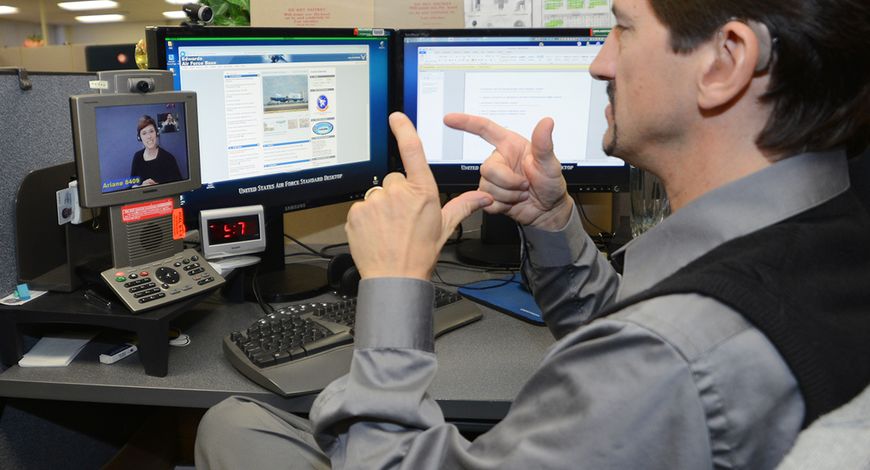
Assistive technology doesn’t magically bring sound into a deaf person’s life, but it can help make communication and daily life easier for them. It’s best to speak to your healthcare provider about what you need and what would best fit your lifestyle. Keeping that in mind, here are some of the assistive options that are available:
Augmentative and alternative communication (AAC) options
As the name says, AAC gives people different options to communicate, or helps with an existing mode of communication. There are many different forms of AAC, which can include
- language boards
- text-to-speech programs, for non-verbal people
- keyboards and touchscreens
- TTY (text telephone) or TDD (telecommunications device for the deaf) devices, which make calling through landlines easier.
Assistive listening devices
“Aren’t assistive listening devices just hearing aids?” you might ask. Not exactly. Also known as assistive listening systems, they work to carry specific sounds, such as speech or lectures, directly into the ear without distracting background noise.
- RF/Radio technology – A transmitter and antenna system delivers sound across large public areas such as theatres or stadiums. Listeners require a receiver and earphones.
- IR/Infrared technology – Sound signals are translated to light and back again for listeners through a receiver and earphones.
- Induction loop/Hearing loop technology – These systems use copper loops or tape installed in the floor to transmit sound. They requires a receiver, or a hearing aid equipped with a T-coil or TeleCoil.
Alerting devices
Alerting devices amplify sound alerts, or replace them with flashing lights, vibrations or even smells. Some have different alerts for different kinds of sounds, such as crying babies or doorbells. Examples of alerting devices include:
- House alarms
- Smoke alarms
- Weather alerts (for impending storms etc.)
- Carbon monoxide alarms
- Baby monitors
- Alarm clocks
- Doorbells
Alerting devices can be essential for the safety of deaf and hearing-impaired people. They allow them to notice alarms and signals they otherwise might not pick up on due to limited hearing. They also provide freedom of movement, and make it easier to receive guests, make telephone calls and enjoy a better social life.
Wrap-up
With assistive technology, the deaf are able to contribute even more widely across society. Access, education and acceptance are important to ensure deaf Malaysians can effectively communicate their knowledge, thoughts and hopes for the future.